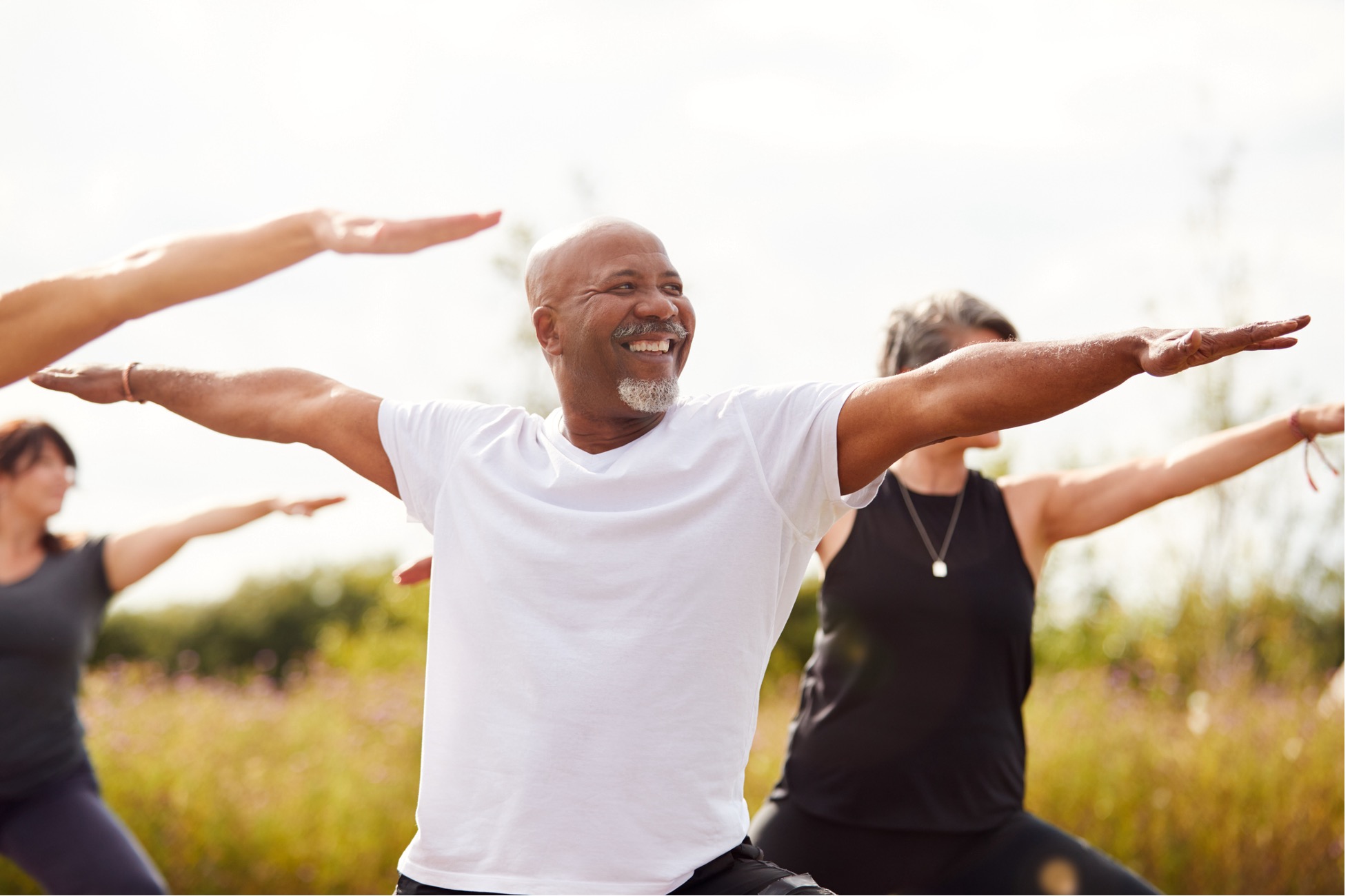A growing number of studies point to the benefits of regular exercise on eye health.
We all know that exercise carries numerous health benefits, including stronger bones, increased suppleness, improved cardiovascular strength, and reduced inflammation. Well, you can also add better eye health to the list! While diet plays an important role in eye health by ensuring a steady supply of good nutrients, physical activity improves blood flow and the circulation of fluids in the body, helping deliver those nutrients to your eyes and relieving pressure.
Many eye conditions are linked to low physical activity, including cataracts, wet age-related macular degeneration, and glaucoma. As little as one-hundred and fifty minutes a week—or thirty minutes a day, five days a week—of moderate aerobic activity, such as walking, cycling, or swimming, can help keep your eyes healthy. Here’s how.
1. Cardio exercise lowers intraocular pressure in the eyes.
Buildup of pressure in the eye can lead to damage of the optic nerve, which over time results in vision loss—a condition known as glaucoma. Glaucoma is one of the most serious causes of blindness, because unlike cataracts (which can be operated upon), nerve damage is permanent. Many factors influence eye pressure, for better or for worse. But some studies have shown that a modest amount of cardio exercise can reduce this pressure, which can be especially beneficial for those with glaucoma.
2. Exercise increases blood flow to the optic nerve.
The optic nerve runs from the brain to the eye, carrying with it visual information from the retina to the brain. When blood flow is restricted, as is the case with an eye stroke, the loss of oxygen and nutrients to the optic nerve results in damage to the nerve and subsequent loss of sight. Regular exercise promotes blood flow and helps prevent eye stroke.
3. Running or walking for half an hour per day reduces the risks of age-related cataracts.
Age-related cataracts form from a buildup of clumps of protein or yellow-brown pigment in the lens of the eye. As these cataracts grow, they block light from reaching the back of the eye, leading to impaired vision or blindness. Oxidative stress (an imbalance between free radicals and antioxidants in the body) is the leading cause of age-related cataracts.
The good news is that a review of eye studies now offers conclusive evidence that shows that regular exercise can lower oxidative stress. In fact, some researchers suggest that cycling or jogging can reduce the risk of age-related cataracts by two percent per hour of exercise.
4. Regular exercise promotes healthy blood vessel development.
Another age-related disease, wet macular degeneration is the result of blood vessels under the eye growing and leaking blood. A recent study of mice in a laboratory showed that those mice who exercised regularly showed 45% less damage to the eye due to a decreased buildup of blood vessels.
5. Vigorous exercise may promote tear production and reduce dry eyes.
Finally, for those who regularly suffer from dry eyes, regular exercise can offer relief. Dry eyes are the result of low tear production, or a tear film on the eye that evaporates quickly. Short term, dry eyes are an irritation, but for those who suffer from chronic dry eyes, the loss of the tear film can cause pollutants to create micro tears on the surface of the eye. However, regular exercise is linked to better tear production and a more stable tear film.
Eye exercises to reduce strain.
While the greatest benefits to eye health come from moving your whole body, there are also some specific eye exercises you can do to relieve strain, which may delay the need to wear glasses or contacts. These exercises are especially helpful if you spend long stretches working at a computer.
- The 20–20–20 rule. During periods of intense focus, rest your eyes every twenty minutes by looking at something twenty feet away for twenty seconds.
- Changing eye focus. Hold your thumb in front of your face and switch between looking at it and focusing on something farther away for a couple seconds each. Alternatively, focus on your thumb as you bring it closer to your face until you feel yourself go cross-eyed. Then move it away again and repeat a few times.
- The figure eight. Pick a point on the floor or a wall about ten feet away from you and move your eyes in a figure eight shape. Repeat in the opposite direction. Alternatively, roll your eyes, or look left and right a few times followed by looking up and down a few times.
- Palming. Rub your palms together to make them warm, then cup them over your eyes making sure not to put any pressure on them. Keep your eyes open until after images fade.
- Blinking. It’s easy to forget to blink when you’re staring at something for a long time. Especially if you suffer from dry eyes, remember to pause and give yourself a blink break every so often.
Visit your eye doctor for your regular checkup.
Finally, don’t neglect regular vision appointments! Just like a physical checkup, going to see your eye doctor can help detect problems with your eyesight before they become a serious concern. Your Heritage Vision Plan covers annual eye exams, and with a provider network that covers all fifty states, you’re sure to find a licensed professional near you. Take a look at our provider search tool and schedule your next appointment today.

